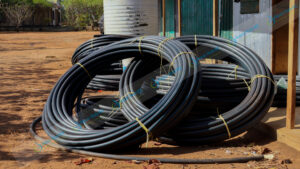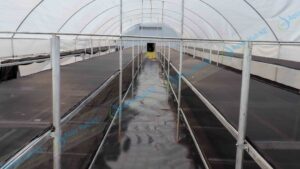Cocopeat Cost in Kenya varies according to the weight or quantity of unit package. For KES 750, you can get a 5kg block of coco peat at Aqua Hub Kenya. Aqua Hub is popular company selling quality cocopeat at affordable prices in Kenya.
Understanding CocoPeat
Cocopeat is an organic planting substance also known as coco coir which is a product of coconut husks for planting.
It improves the ability of soil to absorb and keep moisture for proper crop growth. In addition, coco peat is a sterilizer, it is free from micro-organisms, salts and soil-borne infections.
Unlike soil, coco peat has a slow drying effect, thus keeping moisture available for plant use for a long time.
Properties the make CocoPeat ideal for Growing
- Proper drainage allows it to drain and hold water efficiently.
- Low EC (electrical conductivity) enhances proper ion exchange
- Organic nature enhances slow decomposition.
- Sterile nature prevents diseases and infections.
- Drains water easily thus good for floor use.
- Increases aeration and soil texture.
How is Coco Peat Produced?
Coco Peat is manufactured or extracted from coconut waste products known as husks. It works as an excellent soil enhancement product.
To extract cocopeat, coconut husks are first crushed to form dust, raw coco peat dust. Raw Cocopeat is impure, may contain salt or fiber and therefore washing before use is essential. Cocopeat dust is soaked in water and washed to remove debris and fibers. After washing, add calcium nitrate to dissolve salt. Rinsing with excess water is the next step. The last step is to drain the water and ready to use cocopeat is then available.
How to Use Coco Peat in Farming
Coco peat can be used on its own as an alternative medium for growing seeds, greenhouse plants, or potted plants. It can also mix with soil to enhance the growing conditions of soil.
When using cocopeat as a substrate to soil, mix them in the ratio of 40% soil, 35 % cocopeat and 25% compost manure.
How to Start Seedlings using Cocopeat
Coco peat is an excellent growing substance for quality and viable seedlings. It enhances 100% percent germination since it has no infections and its good water holding capacity.
To start seedlings, cocopeat is first soaked in water to moisten and placed on seedling trays. The trays are filled with coco peat using hand, and seeds are sown on every cell of the tray. You should sow 1-2 seedlings on the cell but it depends on the type of plant. Once done, water the tray and store it in a conducive environment with proper light, drainage and air flow. Greenhouses and shade houses are conducive environments to keep seedling trays.
Benefits of Coco Peat
- Plants grown through coco peat medium thrives faster than crops grown on normal soil.
- Cocopeat doesn’t harm the environment, being an organic substance, it enhances soil growth properties.
- Holds more water capacity unlike normal soil conditions.
- Cocopeat eradicates mud and adapts well to in-house planting of flowers, and ornamental plants.
Steps for Production of Coco Peat
- Extract coconut husks from the coconut shell
- Break the coconut husks to small chunks
- Crush it using a crushing stone
- Remove the fibers by hand.





